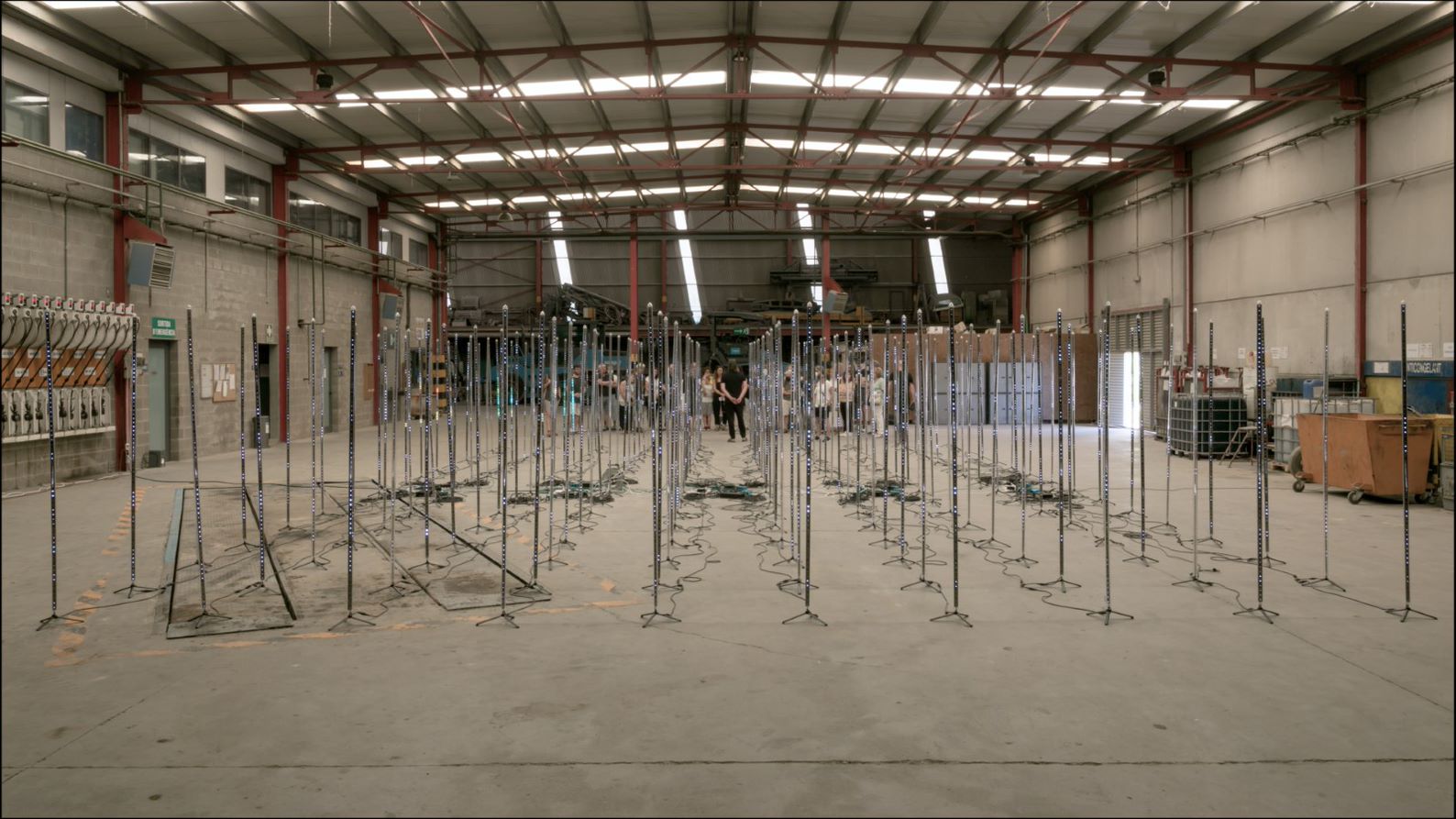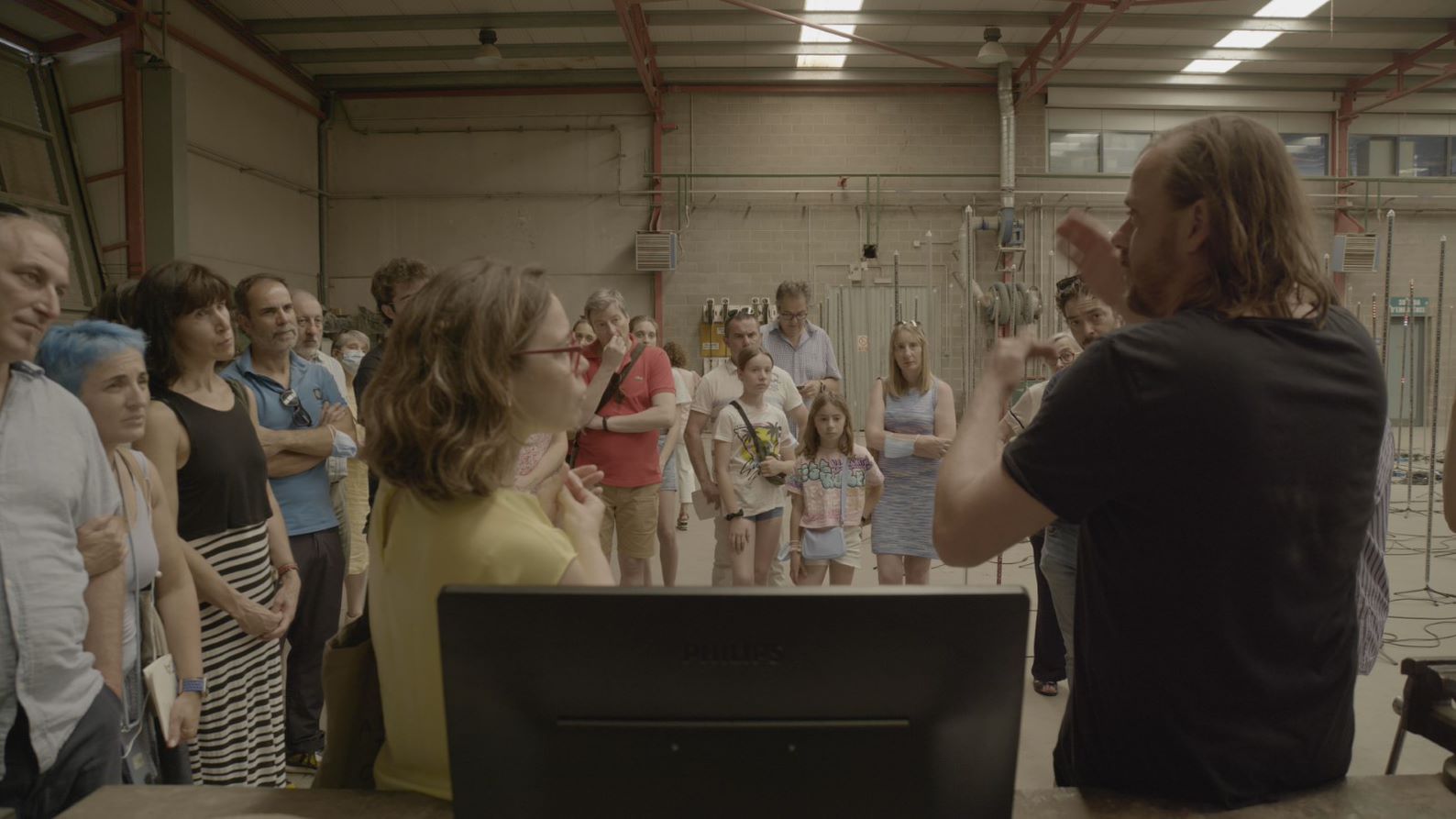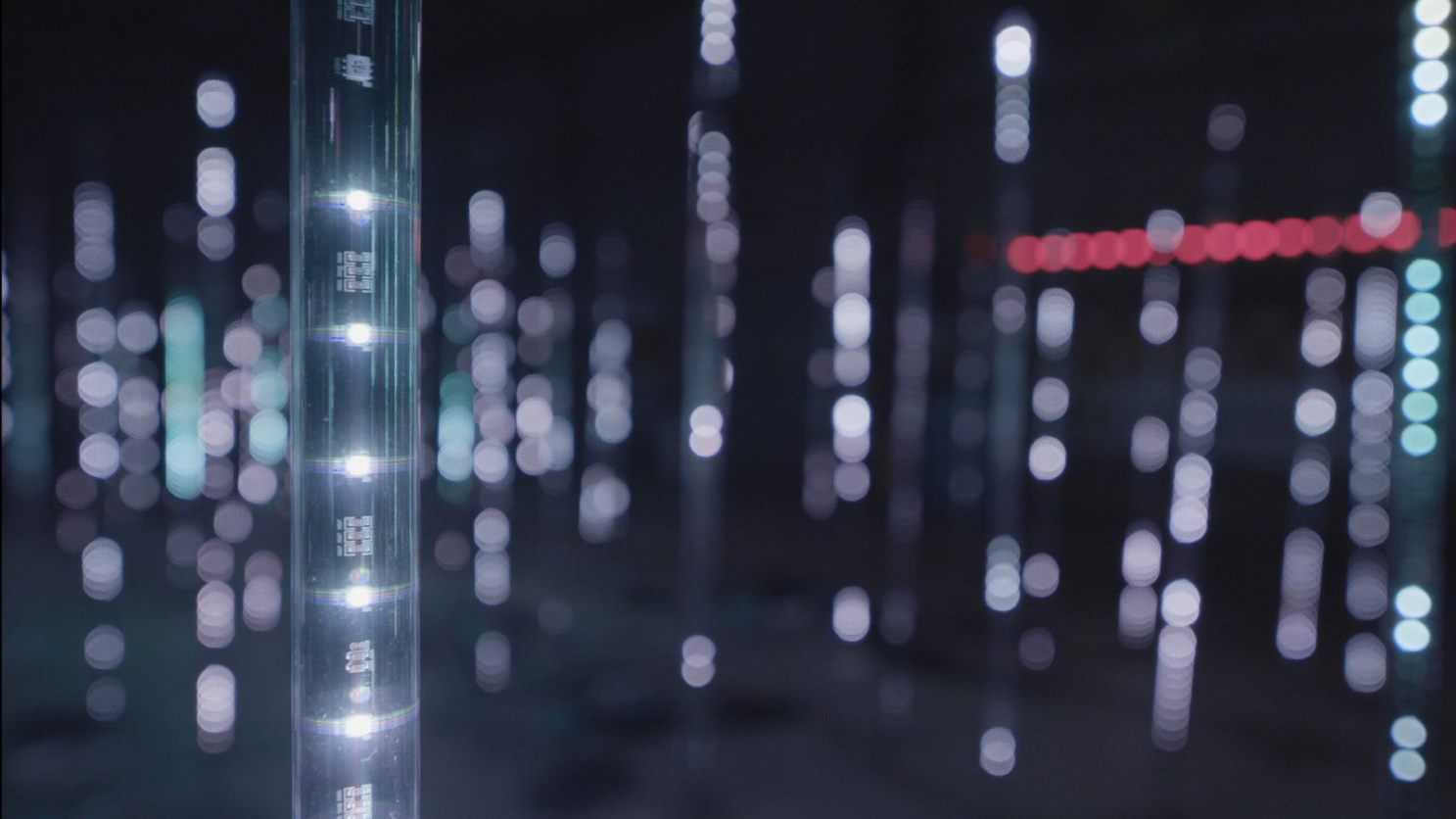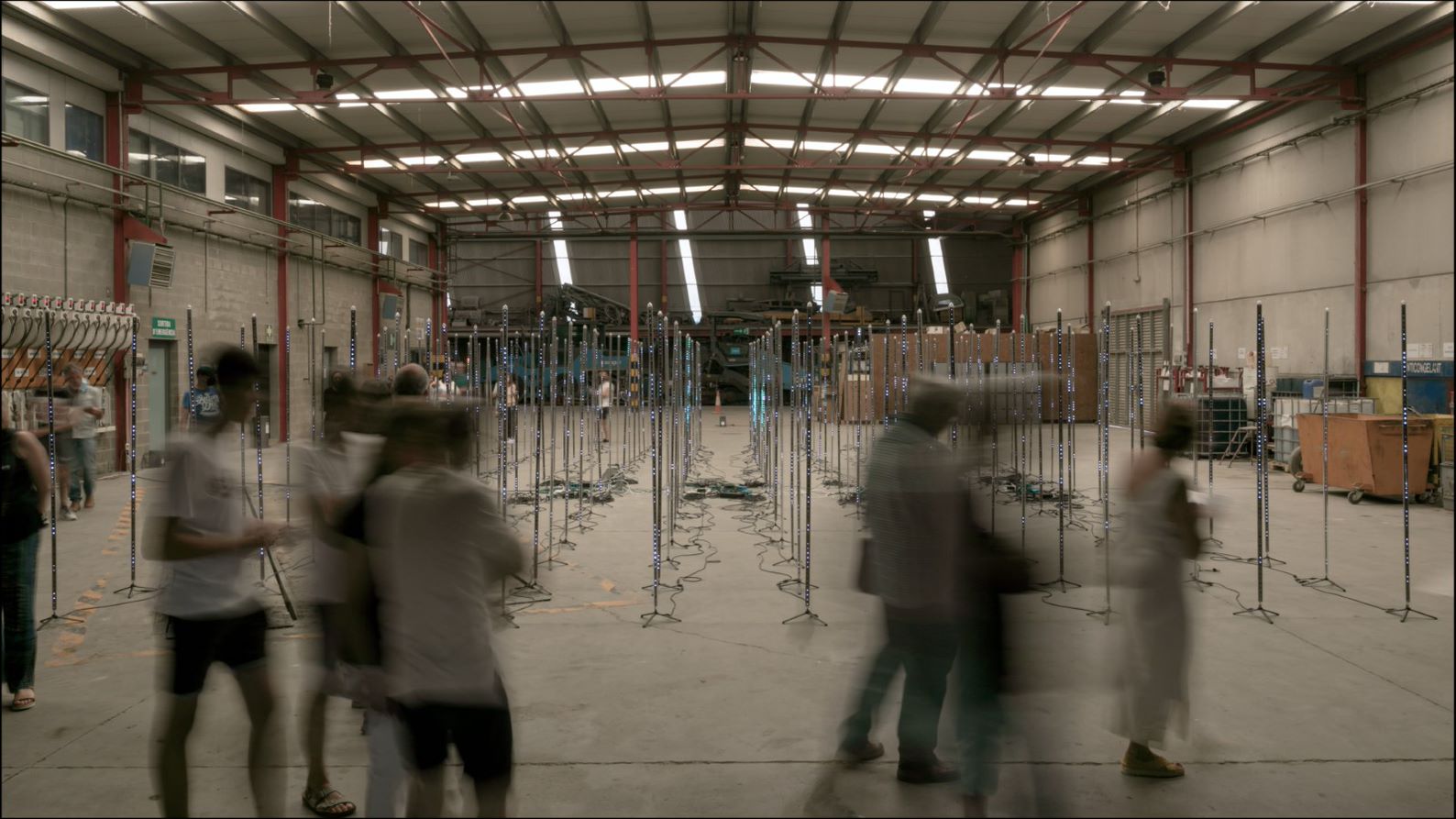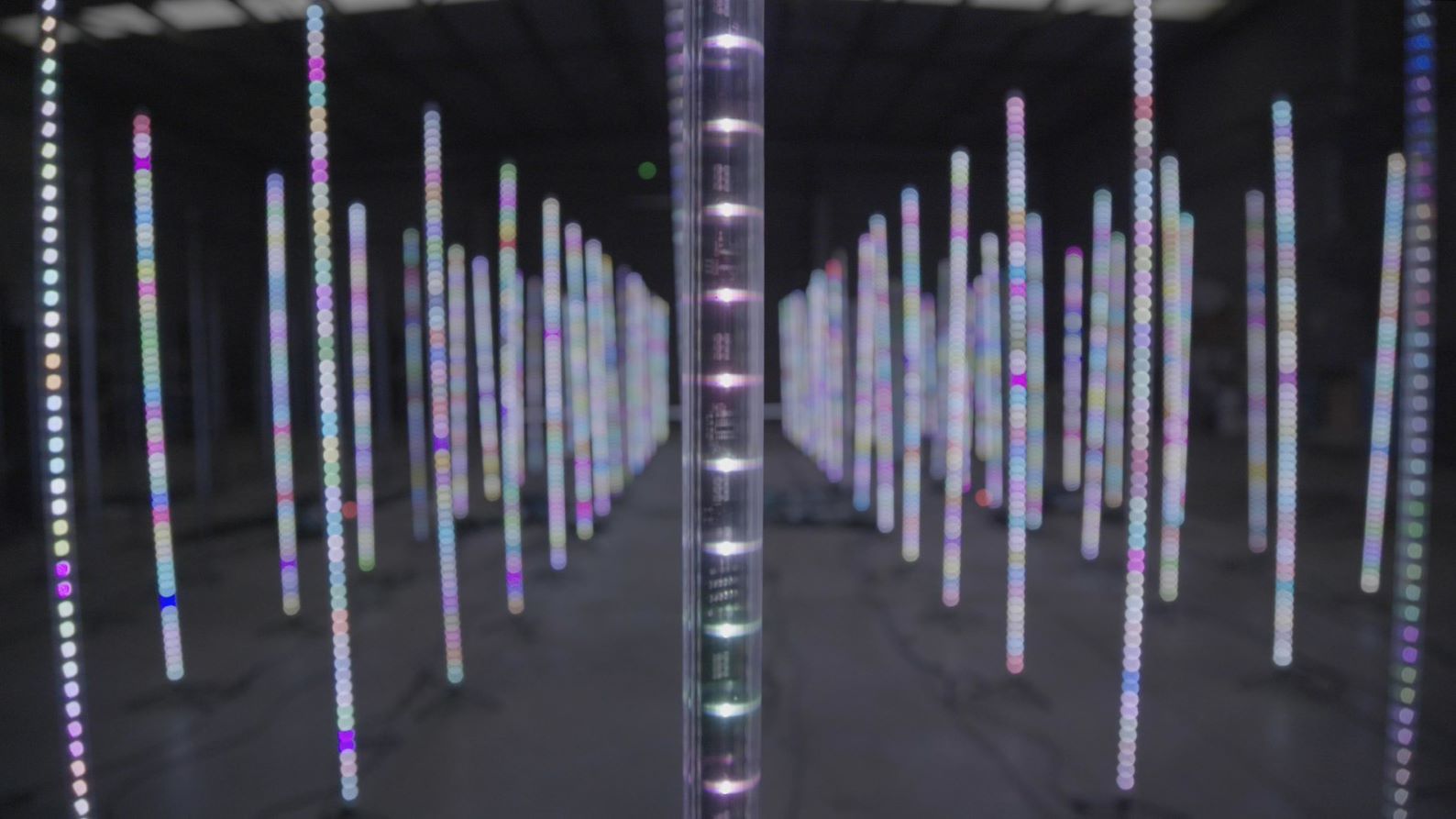
Call Out in PLANTA
The work of Studio Korinsky and Orhan “aib” Kavrakoğlu questions the growing presence of satellites orbiting the earth to connect the world virtually.
On June 11th and 12th, the work ‘Call Out’, by Studio Korinsky and Orhan “aib” Kavrakoğlu, recently awarded with the ISEA2022 Barcelona scholarship granted by the Fundació Sorigué, was shown at PLANTA. The event took place within the framework of ISEA2022 – 27th International Symposium on Electronic Art, which, under the theme ‘Possibles’, aimed to focus the public’s attention to the intersections between art, science, and technology. The work ‘Call Out’, which has been added to the Fundació Sorigué collection, was temporarily installed in Sorigué’s machinery workshop and was presented to visitors by the artist himself, Abel Korinsky.
The main purpose of ‘CALL OUT’ is to question human responsibility in technology through an immersive audio-visual installation. The work is inspired, among others, by the growing presence of satellites in our orbit due to projects such as Elon Musk’s SpaceX, which aims to manage more than 11,000 satellites in orbit by 2027. These devices, key to technological development, still raise many unanswered questions. Since 1967, a decade after the launch of the first satellite, Sputnik, the outer space treaty has provided the basic framework for international space law. However, countries have increasingly permitted commercial endeavours to work under their own rules, leading into a private space race. The work invites us to reflect on issues such as responsibility, ownership, data collection, communication control or lack of awareness about the presence of satellites.
“Call Out” consists on different light phases, which are modified according to the live tracking of the different satellites that fly over the point where the installation is located, between 500 and 600 kilometers above the earth’s surface. To do this, the artists and their studio have developed an specific GPS satellite mapping and data tracking software, so the work is coded from scratch, without using pre-programmed visual software. In addition, the work incorporates a multichannel surrounding sound system that sonifies the satellites according to their position. Therefore, the data processed by the software is transformed in real time into light fields generated by LED tubes and into different pieces of audio. The transient nature and physical beauty of the light patterns intertwine with the immersive sound creation to transport the audience to outer space and blur the lines between reality and illusion.
The different light phases symbolize different situations that occur with the satellites. For example, when the system captures more than eight satellites orbiting the mapped area at the same time, the tubes fade to RGB colours, as a symbol of the risk of collision between them and the loss of data that this would entail. When the tracked satellites cross their paths, the work shows flashes. As the artist himself explains, when the satellites cross paths, they don’t collide, as they are a few kilometres apart, but in terms of space that distance is nothing. The work emphasizes the dangers that these shocks would pose to humanity and space, also based on the Kessler Syndrome. This theory describes the chain reaction that occurs if one satellite collides with another, destroying it and transforming it into thousands of particles that would enter orbit and become a possible danger to other satellites. Therefore, the risk of collision becomes exponential, because the more satellites are in orbit, the more likely they are to collide, and with each collision particles are generated that can also collide with the satellites. At the same time, the work reflects on the appropriation by some private companies of a common good such as the space. As the artist Abel Korinsky affirms “we all share the same sky”, but it is becoming more and more complicated, for example, the simple fact of contemplating it, since the presence of satellites begins to be visible from Earth, while the light pollution or new rhythms of life also make it difficult.
The installation of the work at PLANTA was the first complete presentation of the work, as it had previously been shown at Aaran Gallery Tehran only in digital format based on mapping software, and in physical format at Bozar (Palace of Fine Arts in Brussels) and at the Bulgaria water festival with a grid of light bulbs and a projection that revealed the work in two-dimensional format.
